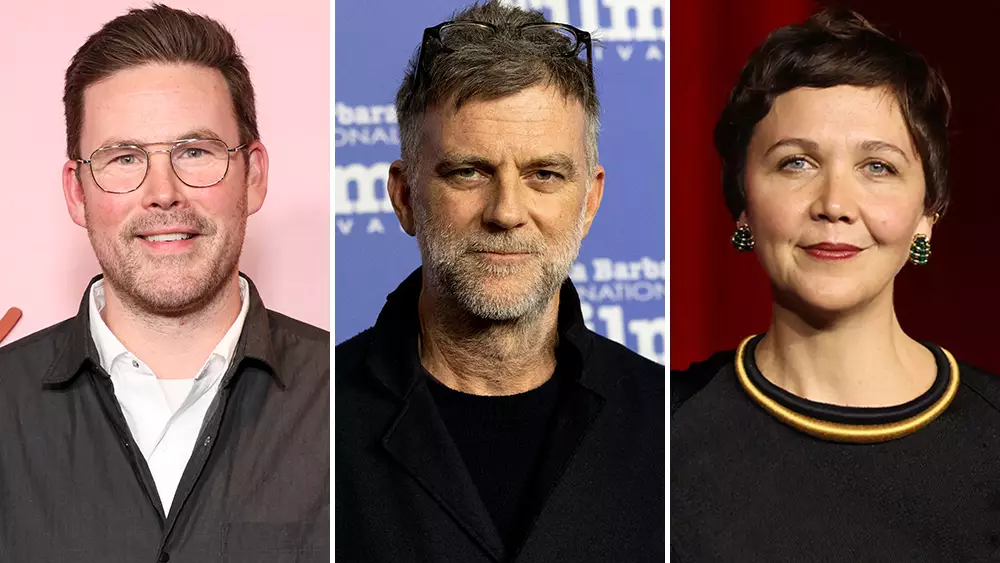In a move that highlights Warner Bros.’ adaptability in the ever-evolving cinematic landscape, the studio has made significant adjustments to its release schedule. This strategic overhaul aims to bolster its box office returns, particularly as the industry grapples with fluctuating audience attendance post-pandemic. With only a handful of auteur-driven films making over $100 million lately, it seems clear that the filtration of releases is more important than ever. By optimizing their dates around high-demand Imax screen availability and competing thrusts from rival studios, Warner Bros. is positioning itself not just to survive but to thrive in a transitional era for cinema.
The Rise of Imax and the Importance of Scheduling
A critical component of Warner Bros.’ recent decisions revolves around the role of Imax and other premium formats. These venues offer not just cinematic experiences but also heightened ticket prices, fueling revenue. It’s telling that the move of Zach Cregger’s “Weapons” to August 8 was not just a matter of logistics but rather a matter of principle. The film’s placement is strategic; it coincides with Disney’s “Freakier Friday,” presenting an intriguing face-off that may siphon audiences from one theater to the other. Yet, Cregger’s genre bending approach offers an inherent suspense, potentially pulling in a diverse crowd, unlike typical sequels that cater to a more restricted demographic.
Ashes of the Past: Misfires and Lessons Learned
Warner’s recent fortunes underscore the volatile nature of film production and distribution. Bong Joon Ho’s “Mickey 17” serves as a cautionary tale, reflecting how even popular directors are not immune to financial missteps. The decision to allow Jeff Goldstein’s team to “lift and shift” dates and titles is a testament to a newly adopted agile mindset that seeks to alleviate pressure on scheduled releases. By moving Paul Thomas Anderson’s “One Battle After Another” to late September, away from direct competition, it raises questions about perseverance in the face of creative challenges. While Anderson’s films are often slow burns, the box office environment demands immediate returns, which tension elevates against his established creative ethos.
Risk and Reward in Star Power
The emphasis on star-studded casts remains a focal point of Warner’s strategy. The allure of names like Leonardo DiCaprio and Julia Garner creates a win-win scenario, combining star power with high-quality storytelling. Yet this reliance also raises questions about the longevity of selling tickets based solely on marquee names. “One Battle After Another,” with its elaborately high stakes and hefty budget of $140 million, forces the studio to ride on the success of its stars while simultaneously acknowledging that no one can predict box office outcomes in this environment. Balancing that expectation against the backdrop of other major chains releases, like Lionsgate’s “Saw XI,” may spell out a bigger crossroad for Warner Bros. than mere numbers can capture.
A Family-Friendly Market: Safe Harbors in New Releases
Contrasting this strategy for big-budget, adult-targeted narratives, Warner Bros. has also placed considerable importance on family films. The strategic rescheduling of “The Cat in the Hat” till February 27, 2026, not only avoids the rush from Pixar’s upcoming releases but also maximizes promotional opportunities across international markets. Such family-centric content can offer a steady revenue stream and has become a priority for studios as they look to capture audiences of younger generations. The balancing act of family films with R-rated adult fare reminds us that the audience is becoming increasingly diverse; studios need to cater to varied tastes and sensibilities.
Navigating Through the Competition
The entertainment industry continues to shift like quicksand, affected by streaming giants and changing audience habits. Warner Bros.’ strategic maneuvers, including the ambiguous layout of both untitled and event films in its 2026 calendar, suggest a prepared psyche geared to contend with these changes. By launching movies on weekends that already buzz with excitement, the studio can tap into audiences’ emotions and motivations, thereby enhancing box office performance. When you consider that Warner has two untitled films slotted alongside stalwarts like Denis Villeneuve and Tom Cruise, it positions itself as an evolving titan within the volatile cinema sphere.
The challenge for Warner Bros. is to ensure that their new schedule resonates with audiences tired of cookie-cutter offerings. By weaving together originality with strategic timings, the studio genuinely aims for a balance that may pave the way for more inventive projects and meaningful narratives. As they continue to refine their cinematic identity, one thing seems certain: the company’s ability to adapt to an ever-changing terrain may very well define the future of blockbuster cinema.

